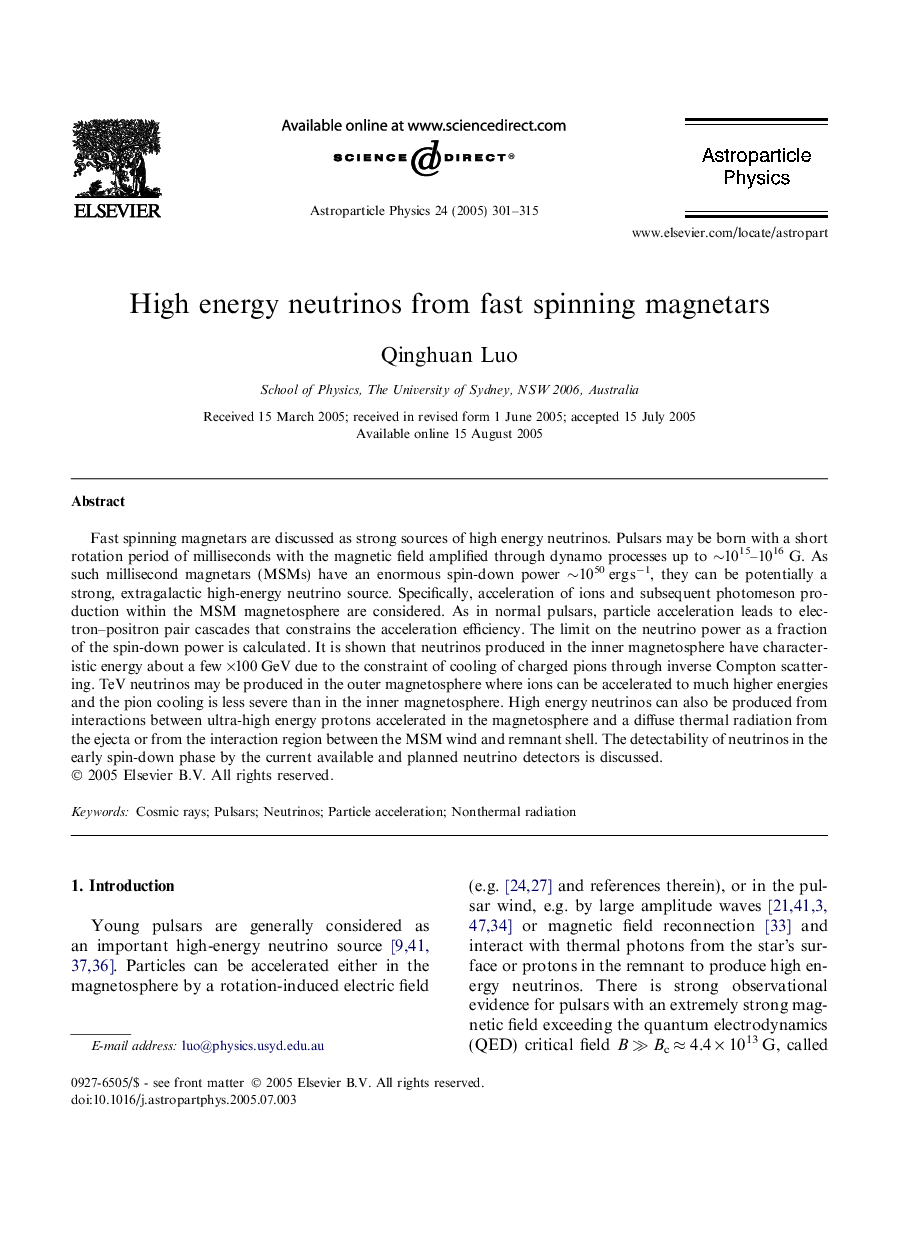| Article ID | Journal | Published Year | Pages | File Type |
|---|---|---|---|---|
| 9827417 | Astroparticle Physics | 2005 | 15 Pages |
Abstract
Fast spinning magnetars are discussed as strong sources of high energy neutrinos. Pulsars may be born with a short rotation period of milliseconds with the magnetic field amplified through dynamo processes up to â¼1015-1016 G. As such millisecond magnetars (MSMs) have an enormous spin-down power â¼1050 erg sâ1, they can be potentially a strong, extragalactic high-energy neutrino source. Specifically, acceleration of ions and subsequent photomeson production within the MSM magnetosphere are considered. As in normal pulsars, particle acceleration leads to electron-positron pair cascades that constrains the acceleration efficiency. The limit on the neutrino power as a fraction of the spin-down power is calculated. It is shown that neutrinos produced in the inner magnetosphere have characteristic energy about a few Ã100 GeV due to the constraint of cooling of charged pions through inverse Compton scattering. TeV neutrinos may be produced in the outer magnetosphere where ions can be accelerated to much higher energies and the pion cooling is less severe than in the inner magnetosphere. High energy neutrinos can also be produced from interactions between ultra-high energy protons accelerated in the magnetosphere and a diffuse thermal radiation from the ejecta or from the interaction region between the MSM wind and remnant shell. The detectability of neutrinos in the early spin-down phase by the current available and planned neutrino detectors is discussed.
Related Topics
Physical Sciences and Engineering
Physics and Astronomy
Astronomy and Astrophysics
Authors
Qinghuan Luo,
